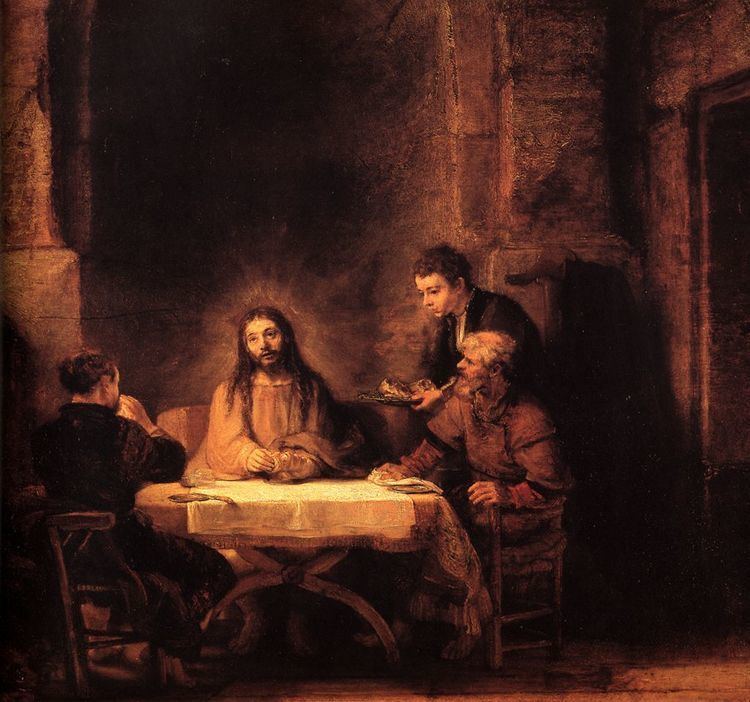 | ||
Died 10th November (1st century) | ||
Cleopas
Cleopas (or Cleophas, Greek Κλεόπας) was a figure of early Christianity, one of the two disciples who encountered Jesus during the Road to Emmaus appearance in Luke 24:13-32.
Contents
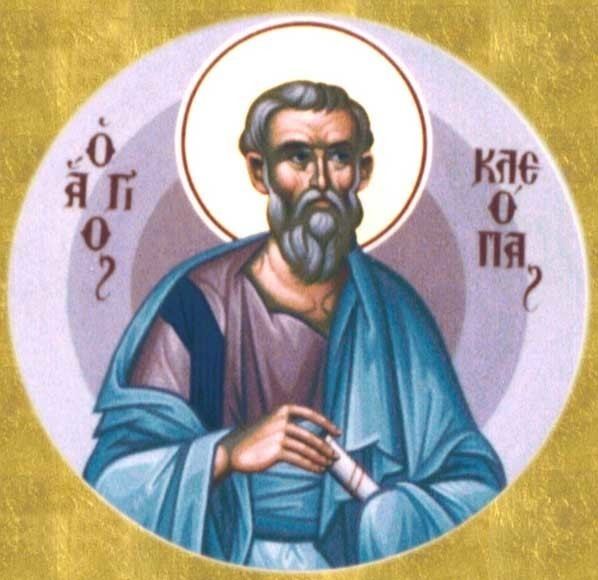
Nmo cleopas
Etymology
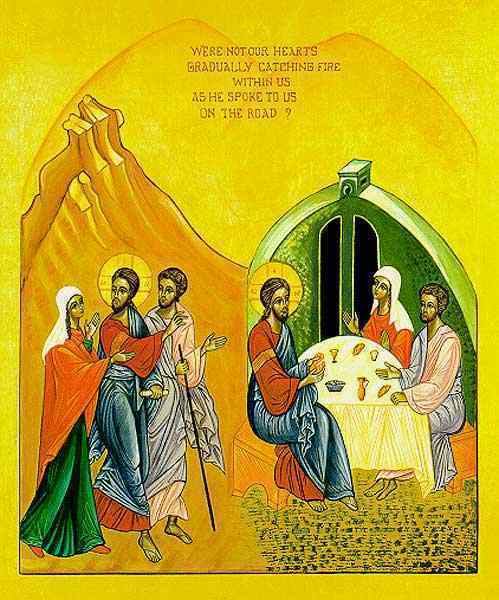
Some writers claim that the name Clopas in John 19:25 ("Mary of Clopas" Κλόπας) is a Hellenized form of a claimed Aramaic name Qlopha (קלופא), and that Cleopas' name (Κλεόπας) is an abbreviated form of "Cleopatros", a Greek name meaning "glory of the father" (best known in the feminine form Cleopatra).
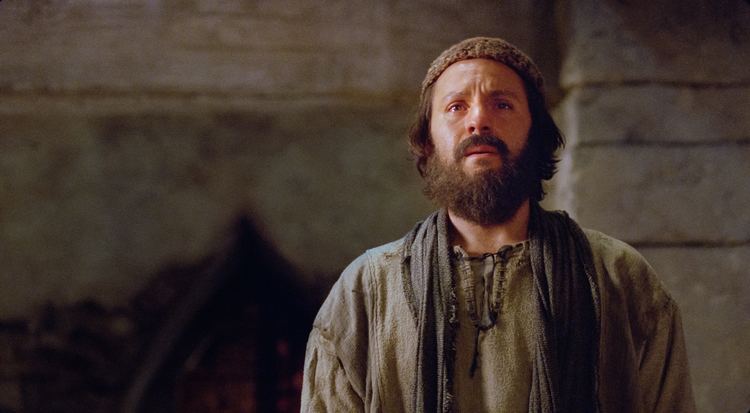
Catholic and Orthodox traditions hold that Clopas, believed as brother of Saint Joseph, is the same person with Cleopas. Others consider that Clophas, Cleophas and Alphaeus are all the same name.
Account in the Gospel of Luke
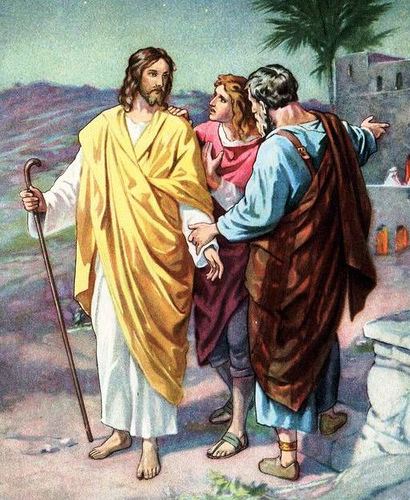
Cleopas appears in Luke 24:13-27 as one of two disciples walking from Jerusalem to Emmaus. Cleopas is named in verse 18, while his companion remains unnamed.
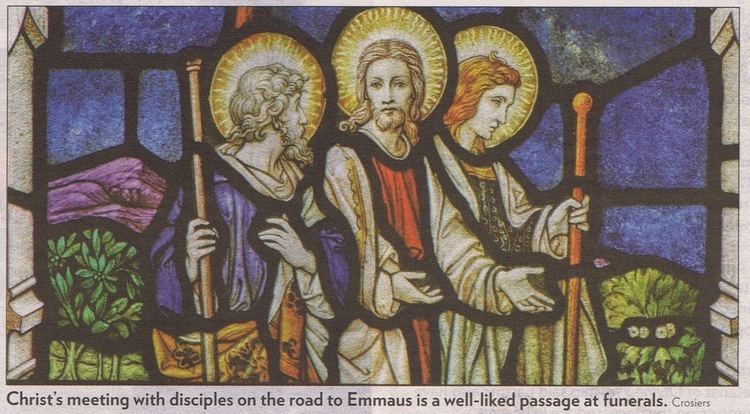
This occurs three days after the crucifixion, on the day of Jesus' resurrection. The two have heard the tomb of Jesus was found empty earlier that day. They are discussing the events of the past few days when a stranger asks them what they are discussing. "Their eyes were kept from recognizing him." He soon rebukes them for their unbelief and gives them a Bible study on prophecies about the Messiah. They ask the stranger to join them for the evening meal. When he breaks the bread "their eyes were opened" and they recognize him as the resurrected Jesus. Jesus immediately vanishes.
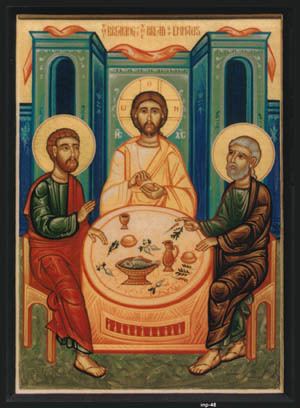
Cleopas and his friend hasten back to Jerusalem to carry the news to the other disciples, and learn Jesus has also appeared to [one of] them. The same event is recorded in Mark 16:12-16:13.
Traditions
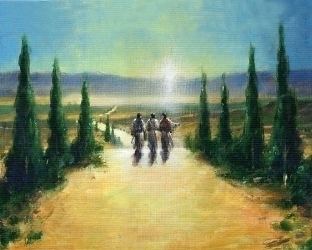
Cleopas has no further occurrence in the New Testament, but in tradition he has often been identified with Clopas or Cleophas, another New Testament figure mentioned in John's Gospel.
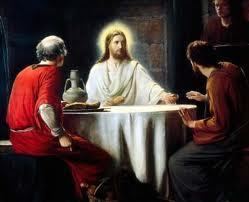
The historian, Bishop Eusebius of Caesarea, quotes the earlier chronicler, Hegesippus, who wrote, c. AD 180, that he had years before interviewed the grandsons of Jude the Apostle and learned that Cleophas was the brother of Joseph, husband of the Virgin Mary: "After the martyrdom of James, it was unanimously decided that Simeon, son of Cleophas, was worthy to occupy the see of Jerusalem. He was, it is said, a cousin of the Saviour." Hegesippus noted that Cleophas was a brother of Joseph (Eusebius, Hist. eccl., III, 11). Epiphanius adds that Joseph and Cleopas were brothers, sons of "Jacob, surnamed Panther."
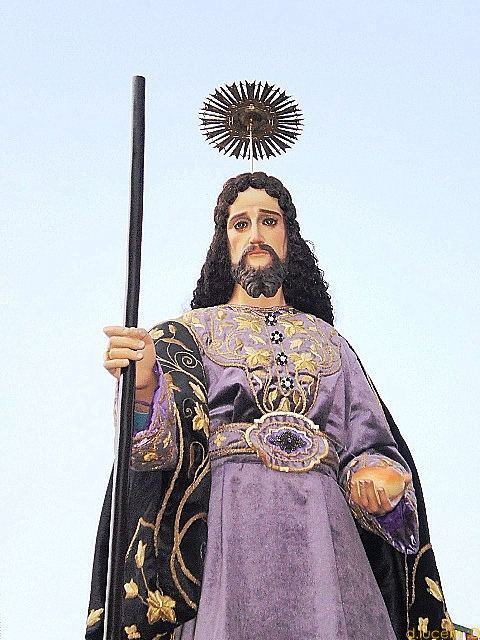
According to the surviving fragments of the work Exposition of the Sayings of the Lord of the Apostolic Father Papias of Hierapolis, who lived c. 70–163 AD, Cleophas and Alphaeus are the same person: "Mary the wife of Cleophas or Alphaeus, who was the mother of James the bishop and apostle, and of Simon and Thaddeus, and of one Joseph" For the Anglican theologian J.B. Lightfoot this fragment quoted above would be spurious.
Cleopas is remembered on 30 October in the Eastern Orthodox Church, 25 September in the Martyrology of the Roman Catholic Church and on 10 November in the Coptic Orthodox Church.
